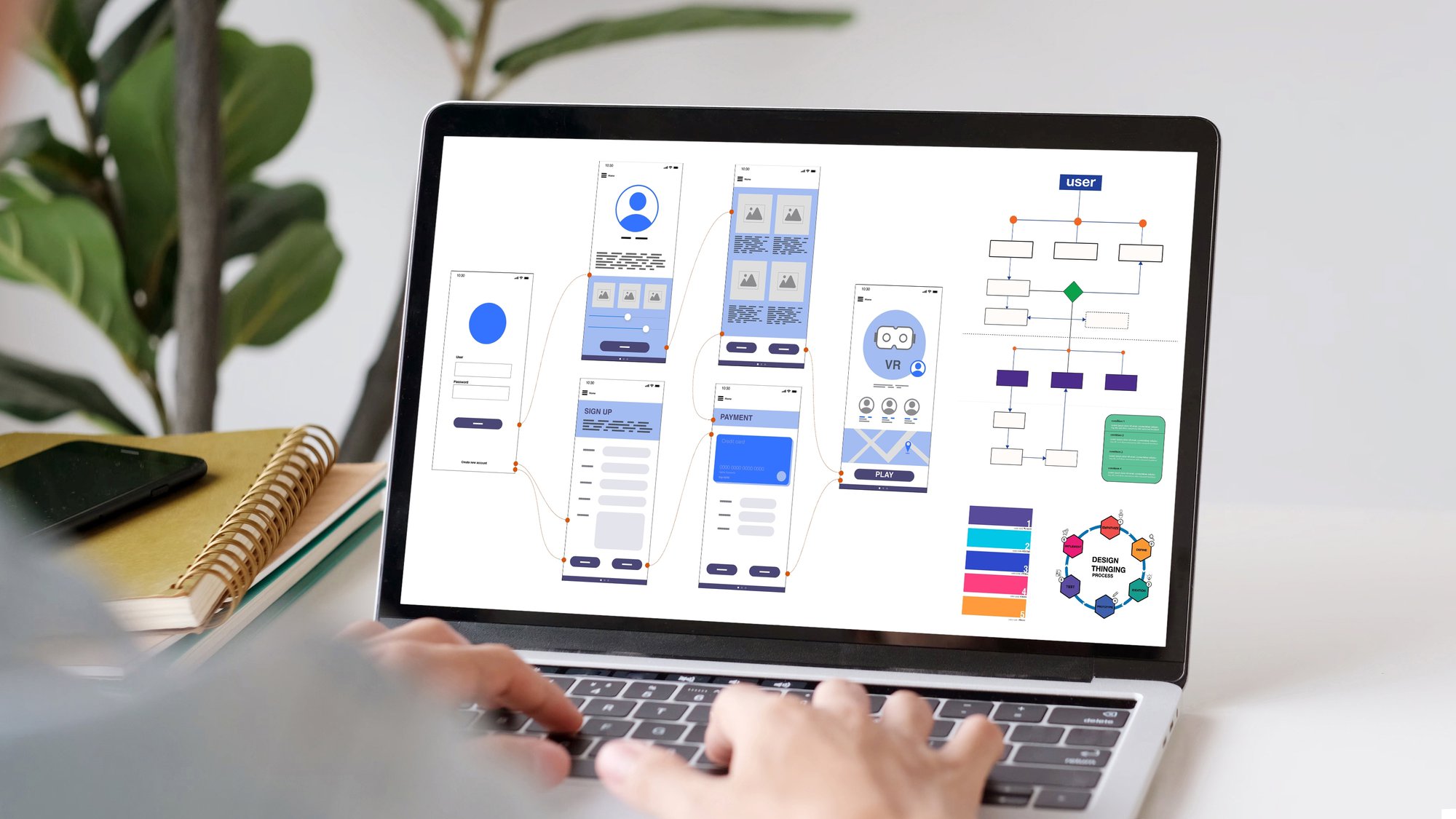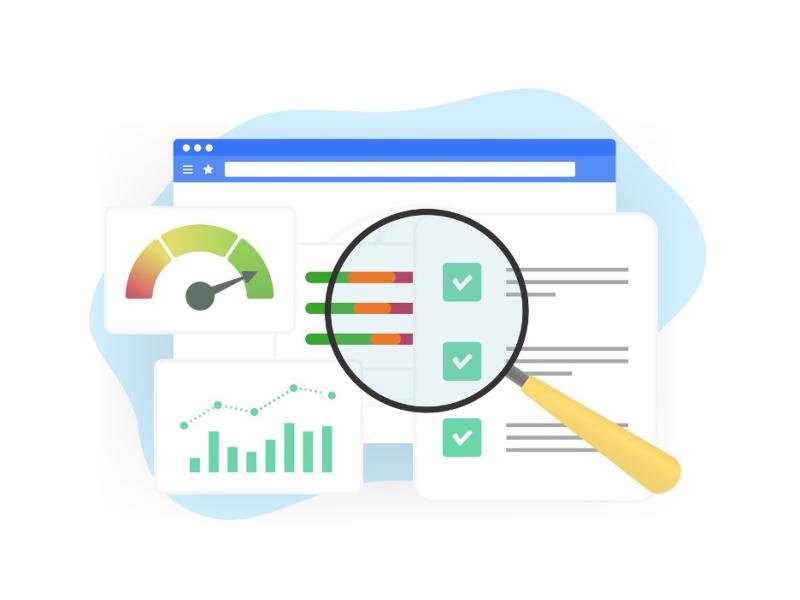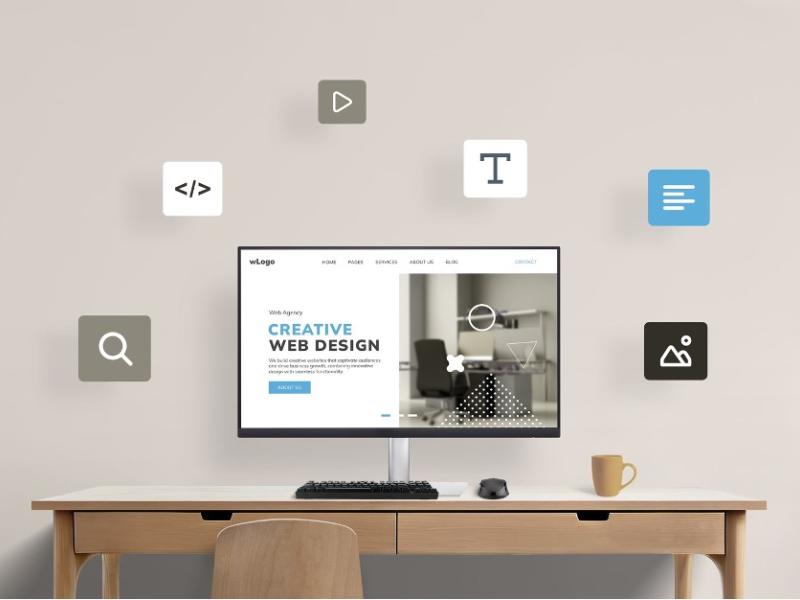Your website is not a static asset but rather a dynamic digital representation of your organization. Maintaining a successful and engaging online presence is critical to any organization's digital strategy. An outdated or poorly functioning website can hinder growth, diminish the user experience, and cost you important opportunities. As businesses, industries, and user expectations evolve, the need to periodically refresh or conduct a complete website redesign will undoubtedly arise.
In this guide, we explore key considerations and use cases for both website refreshes and full-scale website redesigns across several different industries, including life sciences, manufacturing, associations, and healthcare. By understanding the drivers, benefits, and challenges of these website update initiatives, you can ensure your website remains a powerful tool for connecting with customers, driving growth, and achieving long-term success.
Website Redesign vs Refresh: An Overview
The main difference between a website redesign and a refresh lies in the scope and depth of the changes made. A refresh is a more elementary update, focusing on surface-level elements like aesthetics. In contrast, a redesign involves a more comprehensive rethinking of the website, often starting from the ground up. Let’s take a closer look.
A website refresh can make a site look more modern and polished without a complete architectural overhaul. It's similar to giving your house a makeover by updating the aesthetics, such as painting the walls and hanging new curtains, without making any structural changes.
 A website refresh updates the visual design elements of an existing website. This may include the color scheme, typography, imagery, content, and layout. However, the core structure and functionality of the site remain mostly unchanged.
A website refresh updates the visual design elements of an existing website. This may include the color scheme, typography, imagery, content, and layout. However, the core structure and functionality of the site remain mostly unchanged.
A website redesign is a more comprehensive rebuilding of the website. It's like renovating your home—you might knock down walls, expand rooms, and change or expand the layout or foundation. For a website, a redesign can involve changes to the information architecture, navigation, underlying technology, and visual design. The goal is to improve the user experience and functionality, streamline processes, and better align the website with the company's business objectives.
When to Choose a Website Refresh
Periodically refreshing a website can be a strategic and necessary move for businesses to stay competitive and meet evolving customer expectations. There are several key scenarios when a website refresh should be considered:
- If a website's design, layout, and overall user experience feel outdated, stale, or out of step with current web design trends and best practices, a refresh can breathe new life into the online presence and make it more engaging for visitors.
- The core website structure is still effective but needs updates to stay competitive.
- Budget constraints don’t allow for a full redevelopment of the website. Therefore, smaller changes in the form of a redesign are more practical.
- If site metrics indicate high bounce rates, declining visitor engagement, low conversion rates, or other decreasing KPIs, a refresh can help identify and address the underlying issues, whether they're related to design, content, or overall user experience.
- As a business evolves, its website may no longer effectively support its products, services, target audience, or overall strategic direction. A refresh allows the website to be realigned with the company's branding and target audience preferences.
What Does a Website Refresh Entail?
A comprehensive website refresh typically involves the following key steps:
- Auditing the Existing Website. Conducting a thorough analysis of the current website's design, content, and functionality to identify areas for improvement.
- Defining the Refresh Objectives. Clearly articulating the site goals and desired outcomes of the website refresh. These might include improving user experience, increasing conversions, or aligning with brand updates.
- Redesigning the User Interface. Updating the website's visual design, layout, and overall look and feel to create a more modern, engaging, and intuitive user experience.
- Testing and Validating the Refresh. Thoroughly testing the updated website to ensure it meets the defined objectives and provides a smooth user experience across devices and browsers.
Pros and Cons of a Website Refresh
A website refresh can be a quicker and more affordable option than a full redesign. It also typically results in minimal disruption to website functionality. Additionally, a refresh can improve alignment with current design trends and best practices, enhancing the brand's image, online presence, user experience, and engagement.
However, a refresh does not address deeper functionality or outdated technology issues. The changes that can be made might also be limited on outdated systems due to lack of support for newer technologies and features. Therefore, while a website refresh can provide a number of benefits, it is important to carefully consider the tradeoffs and limitations before proceeding.

When to Opt for a Full Redesign
Evaluating the current state of your website, its underlying technology, and your business objectives can help you decide whether a comprehensive redesign is the right strategic move. A website redesign may be the best choice in the following situations:
1. Outdated Design or Technology
- The website’s design and user experience feel outdated or out of touch with current trends and user expectations.
- The underlying technology is no longer supported or is causing performance issues.
- Older websites often rely on outdated technologies that can become increasingly difficult to maintain, secure, and scale. Redesigning the website allows leveraging the latest web development frameworks, content management systems, and other tools to improve performance, security, and functionality.
2. Misalignment With Business Goals
- The website does not effectively support the company’s current products, services, or marketing strategy.
- The website’s information architecture and content do not align with how customers want to interact with the business.
3. Poor User Experience
- Users are struggling to find information or complete key tasks on the website.
- The website is difficult to navigate or not mobile-friendly.
4. Rebranding or Acquisition
- The organization has undergone a rebranding effort, and the website needs to be updated to reflect the new brand.
- The organization has acquired another organization and needs to integrate the websites.
What a Website Redesign Entails
A comprehensive website redesign typically involves the following steps:
- Discovery and Planning. Analyzing the current website, defining business goals, and creating a detailed project plan.
- Information Architecture. Restructuring the website’s content and navigation to improve UX.
- Visual Design. Developing a new visual identity, including branding, layout, and user interface (UI) elements.
- Development. Building the new website using the latest web technologies and best practices.
- Content Migration. Transferring and optimizing existing website content for the new design.
- Testing and Launch. Thoroughly testing the new website and carefully managing the transition to the live site.
Pros and Cons of a Website Redesign
A comprehensive website redesign can provide numerous benefits. It allows for improvements and upgrades to the latest technologies, which can enhance efficiency, streamline workflows, and future-proof functionality. A redesign also presents an opportunity to improve the user experience by enhancing the website's navigation, layout, and overall usability to better meet user needs. Upgrading the underlying technology will improve website speed, security, overall performance, and mobile responsiveness. These factors all contribute to better website authority and ranking, helping you stand out from competitors.
However, a comprehensive redesign is a significant investment of time and resources. The redesign process can also temporarily disrupt normal website operations and user experience. Content migration challenges can also arise, as transferring and optimizing existing website content for the new design can be complex and time-consuming. Existing users may initially be resistant to changes in the website's look, feel, and functionality. It is, therefore, essential to communicate clearly with customers regarding the benefits of the changes and any expected downtime during the upgrade process.
Industry-Specific Examples and Use Cases
Let's explore some industry-specific examples to better illustrate the key considerations and use cases for website refreshes and redesigns.
Life Sciences
A biotechnology startup is launching a new line of innovative medical devices and needs to create a website that effectively showcases its products, educates potential customers, and generates leads.
The company's existing website, designed for its legacy research and development business, is no longer fit for purpose. Simply adding the new devices to the existing pages will undermine their true value. It will not showcase the company’s high-tech capabilities and will not allow for the interaction and collaboration necessary to drive innovation in the field.
A comprehensive website redesign will, therefore, involve:
- Developing a new information architecture and content strategy that highlights the company's medical device offerings and its unique value propositions.
- Designing a visually striking and highly interactive user interface that brings the company's innovative products to life (AR, VR, and video).
- Integrating eCommerce functionality to enable online sales and customer support for the new medical devices.
- Optimizing the website for lead generation, including features like product demos, downloadable resources, chatbots, and live presentations.
- Incorporating advanced technologies to showcase complex data and products.
Manufacturing
A large manufacturing conglomerate is looking to expand its global footprint and target a new set of international customers. The existing website, which was designed primarily for a domestic audience, needs to be completely overhauled to better serve this new market. A website redesign could involve:
- Developing a multilingual and multicultural website architecture to accommodate users from different regions.
- Creating a new user interface that resonates with the target international audience.
- Integrating eCommerce functionality to enable online product sales and customer support in multiple currencies and locations.
- Integrating AR and VR capabilities to effectively showcase products.
- Improving scalability and the ability to handle high traffic and complex datasets without affecting website speed and performance.
- Integrating modern ERP systems.
Associations
A non-profit industry association is looking to expand its reach and engage a more diverse audience of professionals. The existing website, which was designed primarily for the association's long-standing members, needs to be completely overhauled to appeal to this new target market. A website redesign could involve:
- Conducting extensive user research to understand the needs and pain points of the new target audience.
- Improving the site navigation and developing a new information architecture and content strategy that speaks to the interests and concerns of the expanded member base.
- Integrating interactive features, such as online training modules or a job board, to provide more value to the new target audience.
- Offering collaboration tools to make it easier for volunteers and committee members to work together on projects, securely share files, and coordinate their efforts.
- Adding a member portal.
- Implementing analytics and user feedback mechanisms to continuously monitor and improve the website's performance and relevance.
Healthcare
A regional hospital network's website has become outdated in its design and functionality. While the core content and information architecture are still relevant, the visual style and user experience feel stale compared to competitors. A website refresh could involve:
- Updating the visual design of the patient resources and appointment booking pages to be more modern and visually appealing.
- Improving the mobile responsiveness.
- Reorganizing and streamlining the content structure for better usability.
- Enhancing patient resources with trending topics, updated images, FAQs, and the latest medical information.
- Enhancing the site's search functionality and content discoverability.
Suppose the foundational architecture is so outdated that the institution no longer meets safe user data processing and security requirements. In that case, the hospital may have to undergo a complete website rebuild to incorporate the latest security technology, ensuring it meets regulatory compliance and accessibility requirements in the future.
Core Decision Factors to Uncover and Assess
Thankfully, the springboard of your decision-making process is usually straightforward and based primarily on the concrete data and information your organization already has—you must simply collate and analyze it. Consider the following indicators to determine if your website needs a refresh or comprehensive redesign.
User Feedback and Analytics
Analyze user feedback, support tickets, and website analytics to identify common pain points or areas of substandard user experience. If small website updates can resolve the issues, a refresh is sufficient. However, a redesign is generally required if the feedback and data indicate deeper structural problems.
Business Goals and Constraints
If your organization plans strategic, significant changes, such as growth, expansion, or rebranding, your website may require a redesign. A website redesign can enhance performance, improve engagement, and align your online presence with new business goals.
Ask yourself whether your current website architecture can handle the growth and traffic you envision. A redesign may involve substantial changes to the layout, functionality, operational integrations, and underlying technology. This is particularly important if the site needs to accommodate new features or adapt to a rebranding effort.
Current Website Performance
Evaluate the website's technical performance, mobile responsiveness, and adherence to modern accessibility standards. A refresh could suffice if the core functionality and structure are still sound. However, if the underlying technology or UX is outdated, a redesign is necessary to meet modern accessibility standards. This will ensure the site is competitive, secure, responsive, and accessible to a variety of users now and in the future.
Choosing the Right Path Forward
Maintaining a successful and engaging website is crucial for organizations across all industries. Whether your website needs a refresh or a full redesign, the key is to take a strategic, data-driven approach that aligns with your business goals and user needs.
Regardless of your industry, the team at Unleashed Technologies has the website development, design, UI, and UX expertise to guide you through the website redesign or refresh process. We’ll help you resolve technology deficiencies and adapt to evolving business and user needs. Our Evolving Services Plan (ESP) also provides ongoing support and consistent maintenance to keep your website functional and secure as industry needs and regulations change. Let's connect to discuss your digital roadmap and unlock the full potential of your online presence.




